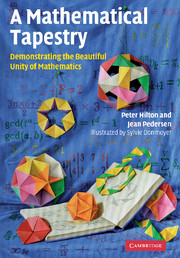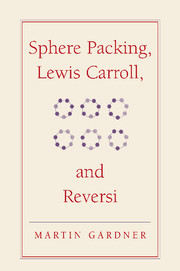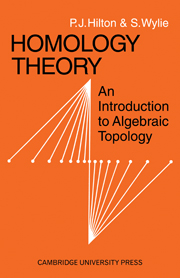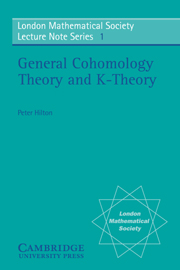A Mathematical Tapestry
This easy-to-read book demonstrates how a simple geometric idea reveals fascinating connections and results in number theory, the mathematics of polyhedra, combinatorial geometry, and group theory. Using a systematic paper-folding procedure it is possible to construct a regular polygon with any number of sides. This remarkable algorithm has led to interesting proofs of certain results in number theory, has been used to answer combinatorial questions involving partitions of space, and has enabled the authors to obtain the formula for the volume of a regular tetrahedron in around three steps, using nothing more complicated than basic arithmetic and the most elementary plane geometry. All of these ideas, and more, reveal the beauty of mathematics and the interconnectedness of its various branches. Detailed instructions, including clear illustrations, enable the reader to gain hands-on experience constructing these models and to discover for themselves the patterns and relationships they unearth.
- Accessible to anyone interested in symmetry, numbers and patterns
- Assumes no mathematical knowledge beyond school level
- Open questions encourage the reader to pursue the subject further on their own
Reviews & endorsements
"There is something very pleasing about seeing paper figures that are visual displays about how math works in the world. The difference from seeing tall buildings or watching planes fly is that it is even possible for children to apply the mathematics to build something. In my opinion, origami and other constructions using paper are one of the best ways to train mathematicians that will be teaching mathematics and this is independent of the level of mathematics that will be taught. While the mathematics in this book is at the level of the college student, people that just want directions on how to make the figures can still use it."
Charles Ashbacher, Journal of Recreational Mathematics
"... a triumph of embodied learning, which applies direct experience with the mathematics of objects. This book should be in every library where a chance meeting with a willing student will surely produce a new mathematician. Highly recommended."
J. McCleary, Vassar College for Choice Magazine
"This culminating work of these two mathematicians is essential reading. A Mathematical Tapestry, which reveals how a seemingly simple paper-folding technique can lead to some of the most powerful ideas in mathematics. What I find most compelling about the book are its accessible tone and its mathematical complexity as well as the detailed connections made across so many different strands. Hilton and Pedersen present a rare opportunity to embark on a true mathematical exploration."
Kasi C. Allen, Lewis and Clark College for Mathematics Teacher
Product details
September 2010Hardback
9780521764100
308 pages
253 × 180 × 23 mm
0.76kg
175 b/w illus.
Available
Table of Contents
- Preface
- 1. Flexagons - a beginning thread
- 2. Another thread - 1-period paper folding
- 3. More paper folding threads - 2-period paper-folding
- 4. A number-theory thread - folding numbers, a number trick, and some titbits
- 5. The polyhedron thread - building some polyhedra and defining a regular polyhedron
- 6. Constructing dipyramids and rotating rings from straight strips of triangles
- 7. Continuing the paper-folding and number theory threads
- 8. A geometry and algebra thread - constructing, and using, Jennifer's puzzle
- 9. A polyhedral geometry thread - constructing braided platonic solids and other woven polyhedra
- 10. Combinatorial and symmetry threads
- 11. Some golden threads - constructing more dodecahedra
- 12. More combinatorial threads - collapsoids
- 13. Group theory - the faces of the tri-hexaflexagon
- 14. Combinatorial and group theory threads - extended face planes of the platonic solids
- 15. A historical thread - involving the Euler characteristic, Descartes' total angular defect, and Pólya's dream
- 16. Tying some loose ends together - symmetry, group theory, homologues, and the Pólya enumeration theorem
- 17. Returning to the number theory thread - generalized quasi-order and coach theorems
- References
- Index.









